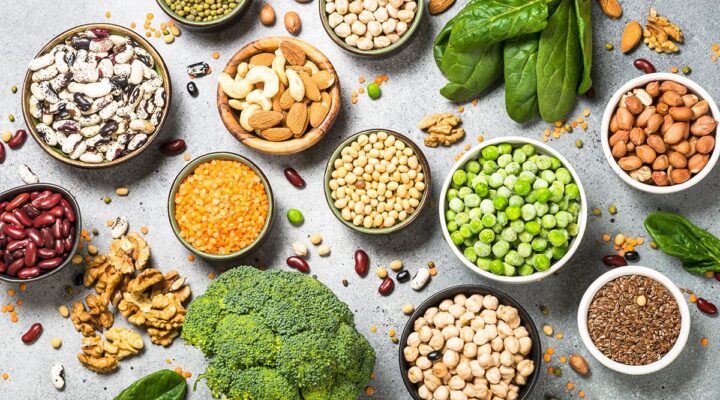The Afterburn Effect: What Is EPOC and How Does It Impact Post-Workout Weight Loss?

For some of you just getting to the gym in the first place might be your sole concern. But if you’re a gym obsessive, focused on the marginal gains around your workouts as much as within, then you might be interested to find out more about EPOC, or Excessive Post-exercise Oxygen Consumption, an observed phenomenon that exists following exercise when measuring oxygen consumption.
To understand EPOC you need to first appreciate what happens when someone goes from rest, to exercise and then on to recovery. When you start exercising from rest, you cannot immediately increase your heart rate and breathing to meet the oxygen demands of that exercise, hence, for the first few minutes of exercise, you are in ‘oxygen deficit’, relying on anaerobic energy systems to meet that energy demand.
Provided the exercise is of low enough intensity and, or long enough, after these initial minutes of adjustment, you then reach a steady state of exercise where you are able to deliver the required oxygen. Of course, some exercises are so short, or of such high intensity that you may never actually reach a steady state, but more on this later.
Similar to the start of exercise, when exercise stops, you do not immediately return your heart rate and breathing back to baseline, pre-exercise levels. Indeed, you are effectively paying back the previously accrued ‘oxygen debt’ during this recovery period.
However, even taking into account the payment of this oxygen ‘debt’, oxygen consumption remains higher in this recovery period, and even after recovery, can still be higher than baseline. This added oxygen consumption is what is specifically referred to as EPOC, more commonly described as the ‘afterburn effect’ of exercise because oxygen consumption implies excess energy (calorie) burning.

What Effect Does EPOC Have On Weight Loss?
Despite the common coinage of EPOC as an afterburn effect, this excess oxygen consumption does not really have anything to do with burning calories per se. After all, what would be the advantage of burning more calories, having just spent lots of energy doing the exercise itself? From an energy balance perspective it makes no sense.
EPOC is used as a strategy of fuel management rather than calorie burning. Exercise, even of low intensity will require more burning of carbohydrate and other finite energy systems which need to be spared and replenished post-exercise. This elevated oxygen consumption post-exercise is there to allow for better oxidation of fuel, in particular fat oxidation, in order for you to pay back these finite fuels used during the exercise itself.
This is a lot to do with the impact of catecholamines (adrenaline and noradrenaline) released as a result of exercise (even before exercise in anticipation). Like your natural fight or flight response, these catecholamines start to liberate fuel, to literally throw everything on to the fire to fuel you fighting or running away. This includes liberating fatty acids from triglyceride stores in adipose tissue and the muscle itself.
It may be the nature of the exercise may not be conducive to use much of these fatty acids during the exercise itself, but this liberating effect of catecholamines, and the still high circulating levels post-exercise, allow for a switch to burning fat as part of your recovery.
How Long Does It Last?
The impact of this in terms of fuel use can last beyond 24 hours post exercise, to some measurable degree. Indeed, if you repeat exercise or physical activity regularly, you could cumulatively see this impact of EPOC on fuel utilisation. In other words, potentially more cumulative fat oxidation.
Is this significant for weight loss? Potentially, yes, but indirectly and not for the reasons of calorie burning, but more for the influence of better fuel management. This could certainly lead to more favourable changes in body composition (i.e. body fat), and metabolic improvements, such as glucose tolerance and improved blood lipids. It is also thought to play a potential role in better appetite regulation too.

How Should EPOC Impact Your Workouts?
Exercise intensity and duration are big determinants of the likely EPOC from a given workout. When looking purely at oxygen you could argue, the more oxygen deficit accrued as a result of the exercise then the likely greater oxygen debt and EPOC required.
By this logic, anaerobic exercise would give you more EPOC as it is accruing more oxygen debt. HIIT exercise is a great sell in this regard as you are ‘stacking’ this oxygen debt across repeated bouts, as a practical way of accruing the most oxygen debt.
However, it is more useful to look at exercise in terms of the fuel deficit and debt, rather than oxygen. The higher the intensity or duration of exercise the greater the depletion of your finite fuel stores, such as carbohydrate and creatine phosphate, leading to a greater reliance on fuel switching post-exercise to pay this back.
The greater the metabolic stress from the exercise the greater the need to manage this. This goes hand in hand with the catecholamine release, which is far greater in response to higher intensity exercise.
From a fuel perspective, HIIT training is similarly effective as a way of depleting fuels, as you can tolerate a higher absolute amount of work (ie. fuel demand) due to repeated bouts with minimal rest, rather than through sustained continuous exercise.
Is that enough to say that HIIT, or high intensity per se, is the only way to exercise? Not really. HIIT is not for everyone, and, although generally safe, if not done correctly it can actually lead to injury and therefore an incapacity to exercise altogether.

How Does Meal Timing Affect EPOC?
This is an interesting and pertinent question. Given that the EPOC period is conducive to you switching to burning fat as a way of sparing and paying back carbohydrate, delivering lots of carbohydrate in this EPOC period can actually counteract or blunt this effect. Delivery of new glucose into the system coupled with the release of insulin will drive towards more carbohydrate utilisation, potentially counteracting this switch.
This is not so damaging in men, who are fairly good at disposing of any new carbohydrate in this recovery period and very efficient at using any new glucose to recover spent carbohydrate stores. This is further helped by the generally higher levels of catecholamines (e.g. adrenaline) present in males during and post-exercise.
However, for women, I have found that carbohydrate has a far greater blunting effect on fat oxidation post-exercise. This is partly down to the fact that women are better glucose preservers in the first place, and partly down to a less pronounced switch to burning fat.
That said, man or woman, it is still relatively easy to ‘over fuel’ for the work done. So, be mindful of what you feed post-exercise. Don’t believe this to be carte blanche to eat anything you like because you are in this ‘afterburn’ of exercise. You could well be contradicting some of the benefits of the exercise itself.


















